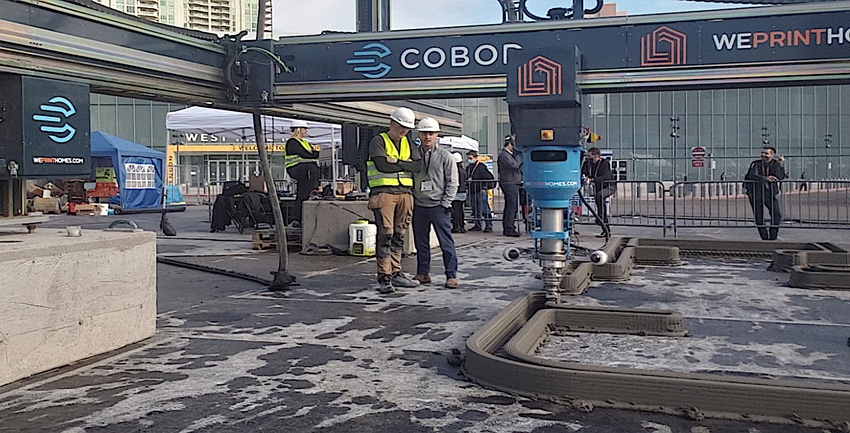With a mission to disrupt the global construction industry, one company that provides 3D-printed concrete has been making a splash at this year's show.

Catching the eye of many attendees at this year’s World of Concrete are live 3D-printed concrete demonstrations, held by COBOD International, in the Riviera Lot.
COBOD International, a Danish company, considers itself a world leader in 3D construction printing technology.
Philip Lund-Nielsen, one of COBOD International’s co-founders and head of the Americas division for the company, said 3D printing has existed for almost two decades but, in the last four years, the technology has seen a rapid adoption rate.
When 3D printing first became mainstream, desktop machines churned out small plastic items, eventually evolving to popular tools for the maker movement as costs continued to drop and technology evolved.
Little did the general public know the immense possibilities in size and scope that were in store for 3D printing just a few years later. That’s changing quickly as industries discover the efficiencies and possibilities that 3D printing can bring, and construction is no exception.
Lund-Nielsen said 3D printing has the capability to transform the industry into a more sustainable model.
“The fact that you’re only 3D printing what you need means you reduce the waste on site,” he said.
As an example, he said electricians and plumbers will often have to carve out holes in concrete during conventional construction, which causes waste.
“With 3D printing you simply print what you need,” he said. “And we can also design it in ways that you don’t need the walls to be load bearing all around. You can just have centered columns.”
Across the country and around the world, more and more design and building teams are trying out the technology. To name just a few: PERI, a 3D construction printer based in Germany, printed its first 3D home in the U.S. last June, a Habitat for Humanity house with 1,722-square feet of living space. A recently announced community of 84 fire-resistant homes will address affordable housing shortages in Oregon.
On YouTube, residential construction influencer Matt Risinger has been chronicling for-sale homes with floors made with 3D printed concrete. Sweden’s ConcretePrint recently completed the country’s first 3D-printed home, a 258-square-foot structure with 3D-printed walls.
Aside from increasing sustainability, Lund-Nielsen said 3D printing has the capability to address another pressing issue in the construction industry: “Not only in the states but globally there is a huge scarcity of skilled labor in the construction industry,” he said.
Lund-Nielsen said many developers must postpone projects because there is not enough skilled labor to bring on site. “Now, what our technology allows for is really to go in and fill that gap by automating some of the processes,” he said.
In the past two weeks, he said the COBOD International has sold three printers, bringing their total printers sold to 35 worldwide across six continents.
The company mission statement is to "disrupt the global construction industry through world-class 3D robotics and automation," according to the its website.
Lund-Nielsen said he expects the demand for 3D-printed concrete technology to increase. He said the company’s partners are planning to build large-scale communities.
“It’s not just going to be one-off projects anymore,” he said.
Read more about:
sustainabilityAbout the Author(s)
You May Also Like




